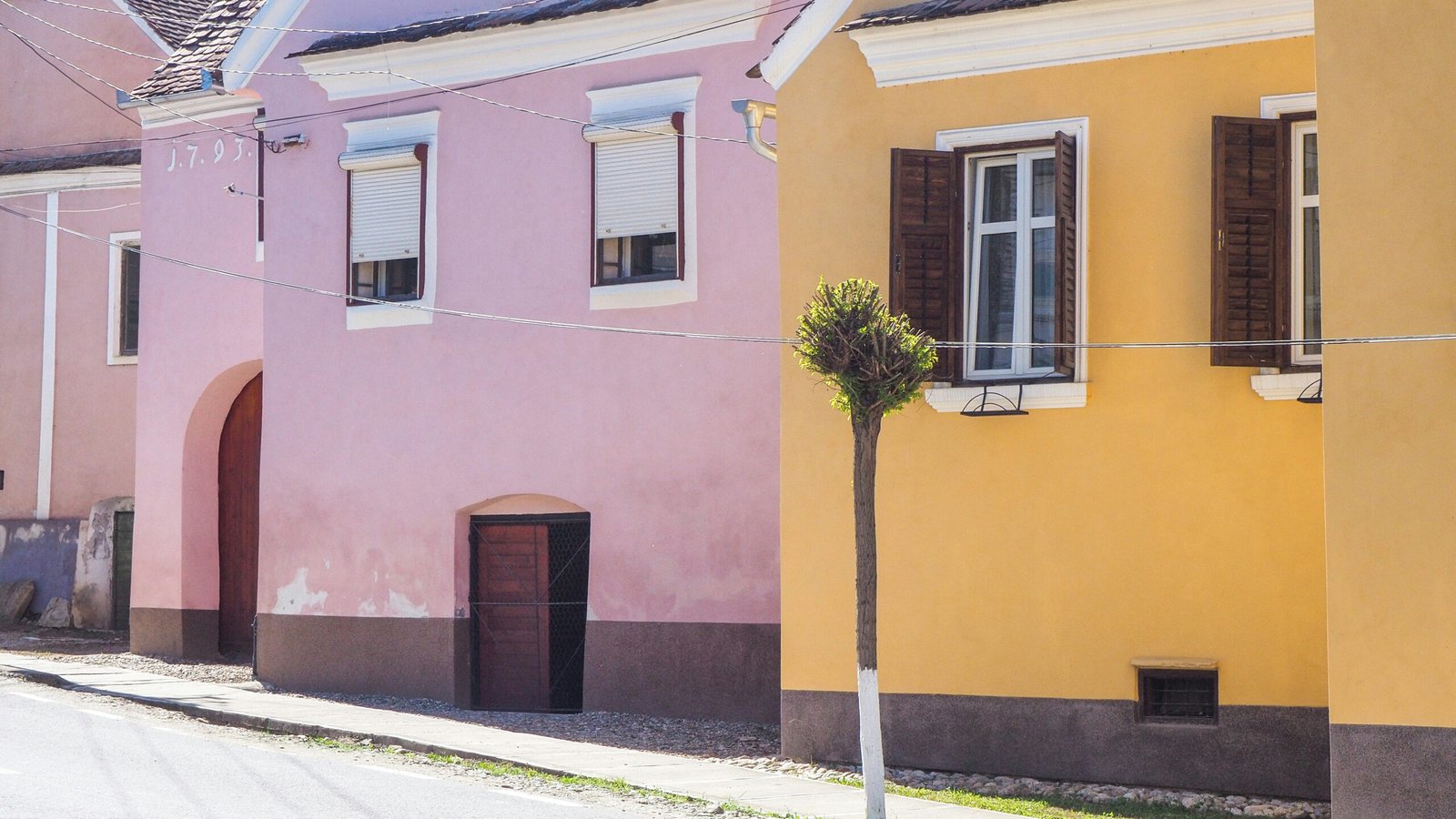Understanding Romania’s Affordability for Tourists
Romania offers excellent value for travelers compared to Western Europe.
It’s not the cheapest destination in the region, but it strikes a balance between comfort and cost.
Prices vary depending on the city, the time of year, and your travel style.
Still, many visitors ask: is Romania expensive to visit?
The short answer is no, especially if you plan wisely. Let’s take a closer look at how your daily expenses might add up.
While some luxury experiences can rival Western prices, day-to-day travel remains surprisingly accessible.
It’s common to spend far less in rural areas than in major cities.
Overall, Romania offers flexibility that lets you control your costs without missing out on what makes it special.
How Much Is Travel in Romania for a Week?
Most travelers can expect to spend between 1,500 and 3,000 RON (approximately €300 to €600 or $325 to $650) per person for a one-week trip.
This includes accommodation, food, transport, and a few activities.
Budget travelers who stick to guesthouses and public transport can stay under 1,500 RON.
Mid-range travelers usually spend closer to 2,500 RON.
For those seeking boutique hotels or guided tours, the cost may rise above 3,500 RON.
Season also plays a role, so check when the best time to visit Romania would be, and plan your budget accordingly.
Prices in July and August spike, especially near the Black Sea coast or in popular cities like Brașov and Sibiu.
Visiting in May, September, or early October can save you money and avoid crowds.
Keep in mind that special events like music festivals or national holidays may drive up local prices. Booking transport and lodging early is wise if you’re traveling during peak periods.
Accommodation Costs in Romania
Budget Options
Hostels and rural guesthouses start at 80–120 RON per night for a private room.
Shared dorms in cities may cost even less, around 50–70 RON per bed. Amenities vary, but most offer free Wi-Fi and simple breakfasts.
Village stays in regions like Maramureș or Bucovina can be incredibly affordable and include meals.
Don’t always expect luxury, but you’ll find warm hospitality and homemade food.
For long-term travelers, farm stays or volunteering at guesthouses can lower costs even further. Many rural homes also rent out rooms informally.
If you speak a little Romanian or travel with a local, you might stumble onto charming, unlisted finds.
Mid-Range Choices
Hotels, boutique guesthouses, and apartments in city centers typically range from 200 to 350 RON per night.
This usually includes modern rooms, private bathrooms, and central locations.
Airbnb is another popular option.
Prices vary, but one-bedroom apartments in Cluj or Timișoara often go for 250–300 RON per night. Many include kitchens, allowing you to save by cooking meals at home.
If you plan to stay longer than a week, some places offer discounts for extended stays. This can be especially helpful if you’re working remotely or moving slowly between destinations.
Splurge Stays
High-end hotels, heritage manors, or spa resorts range from 500 to 900 RON per night.
You’ll find these in places like Sinaia, Brașov, or on the Black Sea coast. These rates often include breakfast and access to wellness facilities.
Some properties also offer packages that include meals, guided tours, or access to natural springs.
If you’re visiting Romania for a honeymoon or special trip, these extras can enhance your stay without an extreme jump in cost.
How Much Is a Meal in Romania?
Street Food and Market Meals
If you’re traveling on a tight budget, you can eat well for under 30 RON.
Local bakeries sell covrigi (pretzels), plăcinte (savory pies), and pastries for 5–10 RON each.
At farmers’ markets, you’ll find fresh fruit, cheeses, and cured meats, almost always, at a lower price than at a supermarket, and often better quality.
Some towns even have canteens or food stalls serving ciorbă (sour soup) and mici (grilled meat rolls) for 15–20 RON.
You’ll find these especially in working-class neighborhoods or near train stations and markets, and you should try at least one on your trip.
Restaurants and Cafes
A sit-down lunch in a casual restaurant typically costs 40–60 RON.
A two-course dinner with a drink in a mid-range restaurant runs closer to 80–120 RON per person.
Local wines and beers are affordable. A draft beer costs about 8–12 RON, while a glass of Romanian wine ranges from 12–20 RON.
If you’re dining in a wine-producing region, such as Dealu Mare, prices may be even better.
Fine Dining
High-end meals in cities like Bucharest or Cluj can cost 200–350 RON per person, especially with wine pairings or tasting menus. Even so, the quality often matches that of much pricier restaurants in Western Europe.
Some restaurants focus on modern Romanian cuisine using seasonal ingredients. These can be worth the splurge for travelers interested in food culture.
Tasting menus often include reinterpretations of traditional dishes, like smoked trout with horseradish or deconstructed sarmale with artisanal pickles.
Transportation and Getting Around
Trains and Public Transport
Romania’s train network is extensive and affordable.
A second-class ticket from Bucharest to Brașov costs around 60 RON.
For longer journeys like Bucharest to Cluj, expect to pay 90–120 RON.
Buses and minibuses are often cheaper, though often less comfortable.
Inside cities, a one-way bus or tram ticket costs 3–4 RON. In Bucharest, a 24-hour public transport pass costs 8 RON.
Most large cities now offer contactless payment options. Day passes or 10-ride tickets can lower costs further if you’re staying a few days.
Train travel is scenic and a great way to see the countryside, but delays are not uncommon. Budget extra time for long journeys and bring snacks.
Car Rentals and Fuel
If you’re planning to explore the countryside, renting a car offers flexibility.
Daily rental prices start around 130 RON and can reach 250 RON depending on vehicle type and season.
Fuel averages around 7.5 RON per liter (roughly €1.50 or $1.60). A full tank might cost 250 RON (about €50 or $55). Be aware that road quality varies. Mountain routes and village roads can be challenging.
Some highways require a vignette (electronic toll sticker), which costs 15 RON for seven days. It’s mandatory and can be purchased online or at gas stations.
Domestic Flights and Rideshares
Romania’s major cities are linked by budget airlines, but trains are often more scenic and cost-effective.
Ridesharing platforms like BlaBlaCar are common and cheap—typically 40–70 RON for intercity routes.
Taxi rides in cities start at around 3.5 RON per kilometer.
Bolt and Uber are available in larger cities and are often cheaper than traditional taxis. Always check reviews and driver ratings.
Entry Fees, Activities, and Tours
Entry to museums, castles, and churches typically range from 10 to 40 RON.
Guided tours, especially in Transylvania or the Danube Delta, cost between 100 and 250 RON per person for a day trip.
A full-day private guide and driver may cost upwards of 500 RON, but it can be worthwhile for hard-to-reach areas.
Outdoor activities such as hiking are often free, especially in national parks. However, guided hikes or adventure sports (like ziplining or paragliding) may add extra costs.
Some natural parks charge a small entrance fee of 5–10 RON, which helps maintain the trails and facilities.
Cultural experiences, like craft workshops or village festivals, can range from free to 80 RON depending on location and season.
Is Romania Expensive for Tourists?
By European standards, Romania remains one of the more affordable travel destinations.
While prices have risen in recent years, they’re still well below those in France, Germany, or even neighboring Hungary.
For most visitors, the answer to “is Romania expensive for tourists?” depends on expectations.
You can eat at a restaurant and stay in a boutique guesthouse for less than the cost of a basic hotel in Western Europe.
Local prices may surprise you. A fresh loaf of bread costs around 5 RON, and a seasonal bouquet at the market might be 15 RON.
Tipping is customary but modest, rounding up the bill or adding 10% is polite and appreciated.
Mobile data is also inexpensive. A prepaid SIM card with 30 GB of data might cost just 25 to 50 RON, making it easy to stay connected on the go.
Ways to Save on Your Trip to Romania
Travel Off-Peak
Avoiding peak season, especially July, August, and around winter holidays, can save you money on accommodation and transport.
May, September, and early October offer mild weather and lower prices.
Booking accommodation in advance also helps secure better deals. Smaller towns and lesser-known regions often have more flexible pricing.
Use Public Transport and Walk
Romanian cities are very walkable, and buses, trams, and trains are reliable and inexpensive.
Unless you’re heading into rural areas, you may not need a rental car at all.
Some towns offer bicycle rentals or guided walking tours, which can be low-cost ways to explore and get oriented.
Shop Local and Eat Simply
Markets, bakeries, and food stalls offer delicious, affordable meals.
Even in larger cities, you’ll find set menus or daily specials at local bistros for under 50 RON.
Bring a reusable water bottle—tap water is safe in most places, especially in urban areas.
Explore Smaller Towns and Villages
Places like Sighișoara, Râmnicu Vâlcea, or Bistrița offer charm without high prices.
In these towns, your money often goes further, and you’ll experience daily life in a more intimate way.
You might also find better prices on locally made crafts or textiles in these places, especially if you’re buying directly from artisans.
Final Thoughts on Romania Travel Cost
A trip to Romania can be as affordable or as luxurious as you make it.
Whether you’re backpacking through villages or renting a cabin in the Apuseni Mountains, your budget stretches surprisingly far.
So how much is travel in Romania for a week?
With thoughtful planning, you can enjoy hearty meals, comfortable stays, and unforgettable sights, without breaking the bank.
Whether you’re spending 150 RON a day or 450, Romania rewards you with experiences that feel rich, even when your spending doesn’t have to be.









Leave a Reply